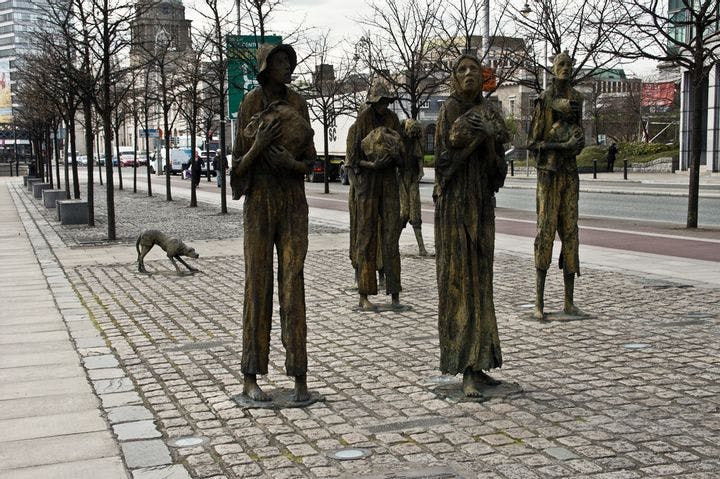Summer 2009
Feeding the World
– Samuel Lowenberg
A brief history of famine.
Famine is on the decline, even as less-severe food emergencies are more frequent. In Famine: A Short History, Cormac Ó Gráda explores why that is so. This far-ranging work of synthesis examines the course of famine throughout the last 5,000 years. Ó Gráda, an economics professor at University College Dublin who has published several books on the 19th-century Irish potato famine, argues against the common assumption that a famine is a simple case of more mouths to feed than food to fill them.
Though famine sometimes results from poverty or acts of nature, he writes, particularly in the last century human actions have been the primary factor—a conclusion that aligns with the findings of Nobel Prize–winning economist Amartya Sen. Historically, wars, dictators, and corruption usually have made famines worse, if they didn’t cause them outright. Ó Gráda cites Hitler’s blockade of Leningrad during World War II, the totalitarian regimes of Stalin and Mao that “greatly exacerbated” the food shortages in their countries, and the starvation that ravaged Tanzania after food stocks were grabbed first by the German and then the British empires.
If Ó Gráda’s project sounds broad, it is. He appears to be trying to create an economic historiography of famine, concerned as much with showing how food crises were perceived and documented as with drawing conclusions about their causes from the evidence. His treatment of the Niger food crisis in 2005, in which three million people—many of them children—were at risk of severe malnutrition, highlights the complexity of modern famines even as it demonstrates the limitations of his approach. Ó Gráda writes that a week after vivid pictures of starving children ran on the BBC and then were picked up by other media outlets, an Irish nongovernmental organization chartered a plane to deliver food to Niger. “Today long-distance movements of foodstuffs during famines, by air and fast ships, are routine,” he concludes.
But the value of fast new transportation is not the first lesson to draw from Niger’s experience. The event was largely seen as a failure of the international community, which for months ignored warnings about the crisis. Further, food shipments generally aren’t the best response to a hunger crisis. The United States is one of only a few countries in the world that still ship food, a practice that congressional analysts say wastes 50 percent of funds allocated to hunger relief and takes months, as compared with the far more efficient method of sending money to NGOs that purchase from local food supplies. But the Bush administration’s efforts to reform this system over the last several years were stymied by members of Congress beholden to powerful American agricultural and shipping interests.
Cormac Ó Gráda appears to be trying to create an economic historiography of famine, concerned as much with showing how food crises were perceived and documented as with drawing conclusions about their causes.
Ó Gráda’s analysis is strongest when he discusses a case in depth. Looking at the food crisis in British-administered Bengal during World War II, which took two million lives, Ó Gráda delves into wartime correspondence between colonial administrators and the war chiefs in London. He concludes that the huge toll of the famine was avoidable. Contrary to the widely held belief that the food shortage was the result of hoarding, he blames it on the decision by British officials to focus food and transportation resources on the war effort. “The two million and more who perished in Bengal were mainly unwitting, colonial casualties of a struggle not of their making—that against fascism.”
In his conclusion, Ó Gráda notes that increased food production, improved agricultural and medical technologies, and better governance (the despots Hitler, Mao, and Stalin “have left no important heirs”) have reduced the prevalence of wide-scale famines of the sort that were so devastating in the past. But chronic malnutrition is still widespread, a direct result of income inequalities in many societies between a small group of the very rich and a large mass of the very poor. It’s an issue Ó Gráda fails to seriously delve into. Sometimes, more focus and less scope can lead to richer findings.
* * *
Samuel Lowenberg is a journalist whose writing on malnutrition and global public-health issues has appeared in The Economist, The New York Times, The Washington Post, and The Lancet.
Reviewed: Famine: A Short History by Cormac Ó Gráda, Princeton University Press, 327 pp, 2010.
Photo courtesy of Flickr/William Murphy
Up next in this issue
